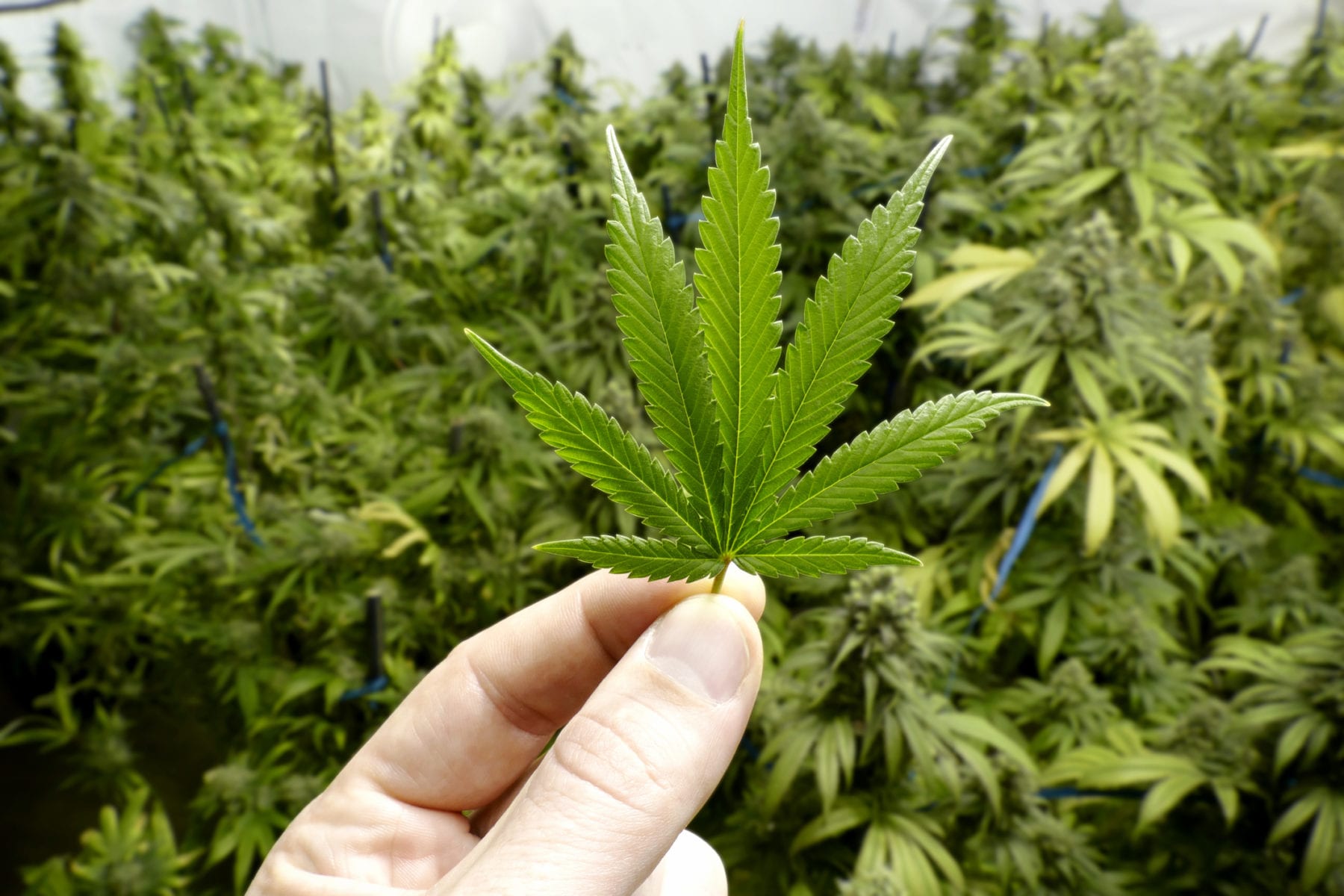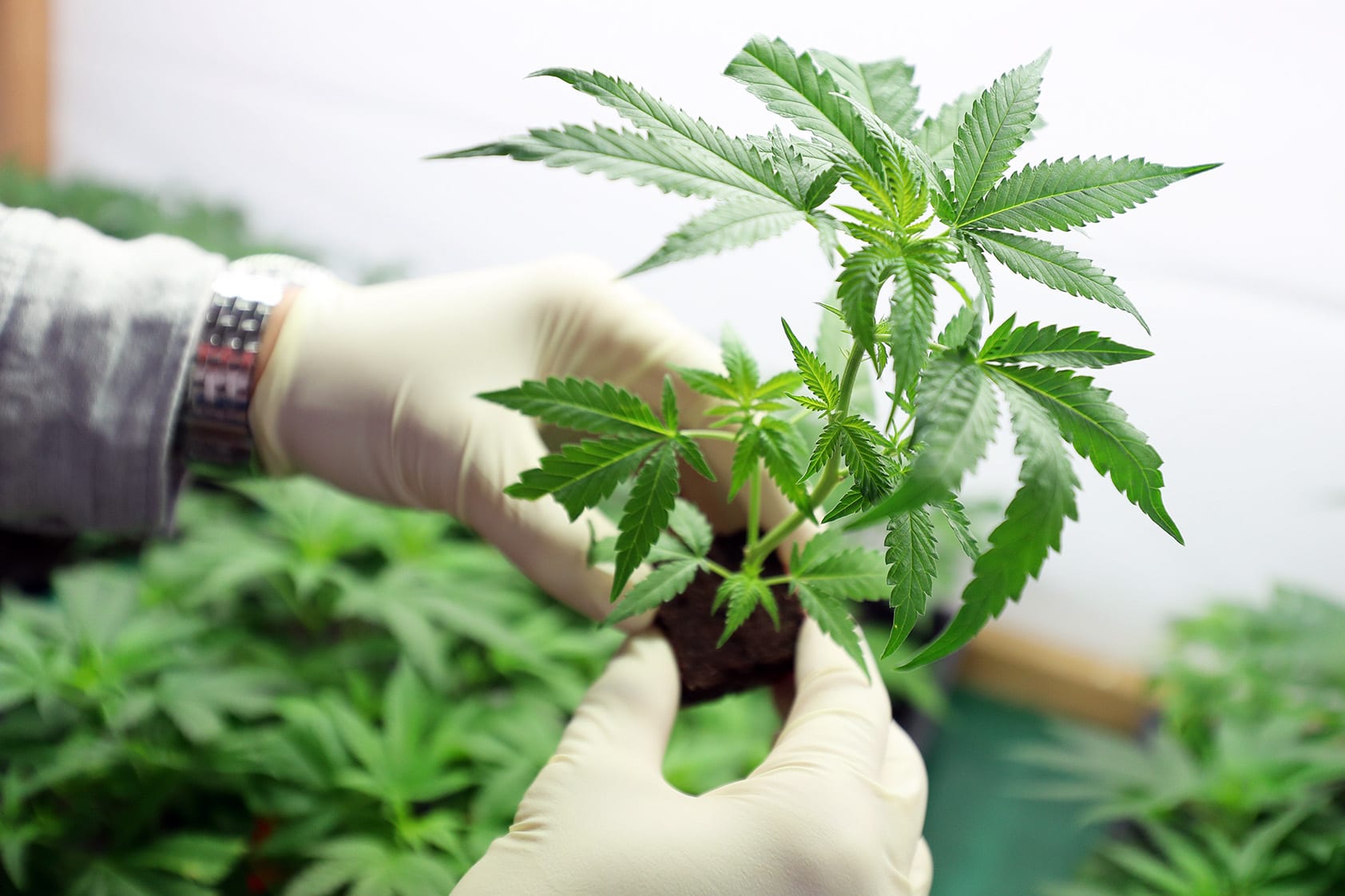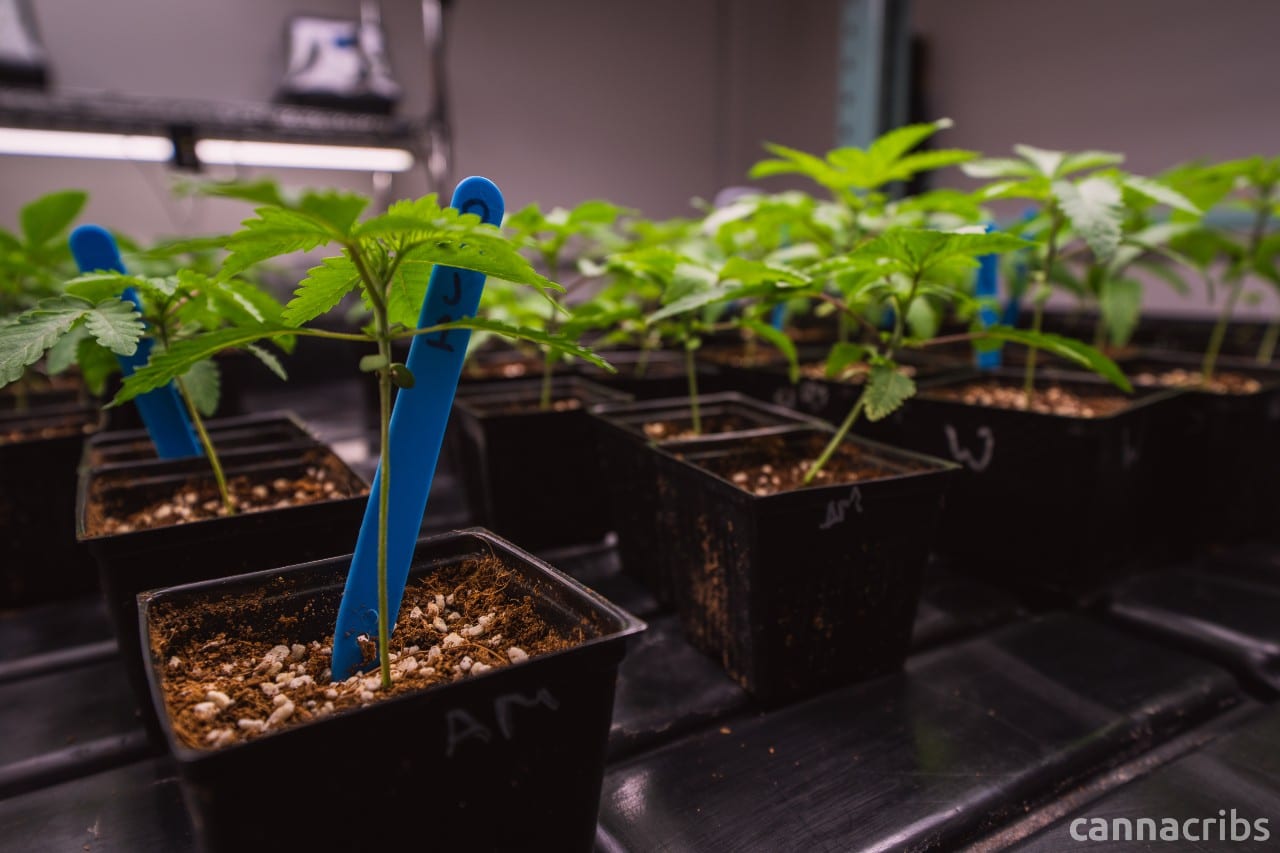Plant Nutrition and The 17 Elements
Plant nutrition is based on a total of 17 elements, divided into Macro, Secondary, Micro, and Trace nutrients. The first set of three come from carbon dioxide in the air and the water they drink, and include carbon, hydrogen, and oxygen. In general, soil supplies large amounts of nitrogen, phosphorus, and potassium (macro nutrients), as well as calcium, magnesium, and sulfur (secondary nutrients). Additionally, soil also supplies relatively small amounts of iron, manganese, boron, molybdenum, copper, zinc, chlorine, and cobalt (micronutrients). Nutrients must be available not only in sufficient amounts but also in appropriate ratios to support proper plant health.
Plant nutrition is a difficult subject to understand completely, partially because of the variation between different plants and even between different species or individuals of a given clone. Elements present at low levels may cause deficiency symptoms, and toxicity is possible at levels that are too high. Furthermore, deficiency of one element may present as symptoms of toxicity from another element, and vice versa. An abundance of one nutrient may cause a deficiency of another nutrient. For example, K+ uptake can be influenced by the amount of NH+

Nutrient Profiling
Nutrient profiling is a means of presenting a nutrient solution with its worth given in terms of its elemental makeup for elements essential to plant growth, and some beneficial elements. Because this is a common language spoken by all nutrient solutions and fertilizer products, when it’s known, a nutrient mix can be tailored using the guaranteed analysis from a variety of fertilizer products. In this way, a nutrient solution mixed from one assortment of fertilizer products can be reproduced by someone using a completely different assortment of products. For example, a solution made from liquid premixed products can be reproduced by someone using dry raw chemical compounds, and vice versa.
This method of communicating nutrient solutions has been used by researchers and professionals because it leaves no doubt as to the nutritive worth to be targeted when mixing fertilizers with water. When a profile target is given, instead of the measures for a specific fertilizer or fertilizer brand used to mix the profile, it effectively becomes a generic formula that can be used by anyone even if they don’t have the same fertilizers or brand name products used by the originator of the profile.

Macronutrients
- Carbon: Carbon forms the backbone of most plant biomolecules, including proteins, starches and cellulose. Carbon is fixed through photosynthesis; this converts carbon dioxide from the air into carbohydrates which are used to store and transport energy within the plant.
- Hydrogen: Hydrogen is necessary for building sugars and building the plant. It is obtained almost entirely from water. Hydrogen ions are imperative for a proton gradient to help drive the electron transport chain in photosynthesis and for respiration.
- Oxygen: Oxygen is a component of many organic and inorganic molecules within the plant, and is acquired in many forms. These include: O2 and CO2 (mainly from the air via leaves) and H2O, NO−.

Primary Macronutrients
- Nitrogen: Nitrogen is a major constituent of several of the most important plant substances. In many agricultural settings, nitrogen is the limiting nutrient for rapid growth. There is an abundant supply of nitrogen in the earth’s atmosphere — N2 gas comprises nearly 79% of air. However, N2 is unavailable for use by most organisms. Therefore, nitrogen is often the limiting factor for growth and biomass production in all environments where there is a suitable climate and availability of water to support life.
- Phosphorus: Like nitrogen, phosphorus is involved with many vital plant processes. It is present in both organic and inorganic forms, both of which are readily translocated within the plant. All energy transfers in the cell are critically dependent on phosphorus. Phosphorus is available to plants in limited quantities in most soils because it is released very slowly from insoluble phosphates and is rapidly fixed once again. Under most environmental conditions it is the element that limits growth because of this constriction and due to its high demand by plants and microorganisms.
- Potassium: Unlike other major elements, potassium does not enter into the composition of any of the important plant constituents involved in metabolism, but it does occur in all parts of plants in substantial amounts. It seems to be of particular importance in leaves and at growing points. Potassium is outstanding among the nutrient elements for its mobility and solubility within plant tissues. Potassium regulates the opening and closing of the stomata by a potassium ion pump. Since stomata are important in water regulation, potassium regulates water loss from the leaves and increases drought tolerance.

Secondary Macronutrients
- Sulfur: Sulfur is a structural component of some amino acids and vitamins, and is essential for chloroplast growth and function, and can be found in the iron-sulfur complexes of the electron transport chains in photosynthesis. Sulfur cannot be mobilized from older leaves for new growth, so deficiency symptoms are seen in the youngest tissues first.
- Calcium: Calcium regulates transport of other nutrients into the plant and is also involved in the activation of certain plant enzymes. Calcium is involved in photosynthesis and plant structure. Calcium has been found to have a positive effect in combating salinity in soils, and has been shown to ameliorate the negative effects that salinity has such as reduced water usage of plants.
- Magnesium: The outstanding role of magnesium in plant nutrition is as a constituent of the chlorophyll molecule. As a carrier, it is also involved in numerous enzyme reactions as an effective activator, in which it is closely associated with energy-supplying phosphorus compounds. Magnesium is very mobile in plants, and, like potassium, when deficient is translocated from older to younger tissues, so that signs of deficiency appear first on the oldest tissues and then spread progressively to younger tissues.

Micronutrients
- Iron: Iron is necessary for photosynthesis and is present as an enzyme cofactor in plants. Iron is not a structural part of chlorophyll but very much essential for its synthesis. Iron deficiency can result in interveinal chlorosis and necrosis. Copper deficiency can be responsible for promoting an iron deficiency.
- Molybdenum: Molybdenum is a cofactor to enzymes important in building amino acids and is involved in nitrogen metabolism. Reduced productivity as a result of molybdenum deficiency is usually associated with the reduced activity of one or more of these enzymes.
- Boron: Boron has many functions within a plant: it affects flowering and fruiting, pollen germination, cell division, and active salt absorption. The metabolism of amino acids and proteins, carbohydrates, calcium, and water are strongly affected by boron. Boron is essential for the proper forming and strengthening of cell walls. Lack of boron results in short thick cells producing stunted fruiting bodies and roots.
- Copper: Copper is important for photosynthesis. It is involved in many enzyme processes; necessary for proper photosynthesis; involved in the manufacture of lignin (cell walls) and involved in grain production. It is also hard to find in some soil conditions. Symptoms for copper deficiency include chlorosis.
- Manganese: Manganese is necessary for photosynthesis, including the building of chloroplasts. Manganese deficiency may result in coloration abnormalities, such as discolored spots on the foliage.
- Sodium: Sodium is involved in the regeneration of phosphoenolpyruvate in CAM and C4 plants. Sodium can potentially replace potassium’s regulation of stomatal opening and closing.
- Zinc: Zinc is required in a large number of enzymes and plays an essential role in DNA transcription. A typical symptom of zinc deficiency is the stunted growth of leaves, commonly known as “little leaf” and is caused by the oxidative degradation of the growth hormone auxin.
- Nickel: Nickel is essential for activation of urease, an enzyme involved with nitrogen metabolism that is required to process urea. Without nickel, toxic levels of urea accumulate, leading to the formation of necrotic lesions.
- Chlorine: Chlorine, as compounded chloride, is necessary for osmosis and ionic balance; it also plays a role in photosynthesis.
- Cobalt: Cobalt has proven to be beneficial to at least some plants although it does not appear to be essential for most species.
- Aluminum: Aluminum is one of the few elements capable of making soil more acidic. This is achieved by aluminum taking hydroxide ions out of water, leaving hydrogen ions behind. As a result, the soil is more acidic, which makes it unlivable for many plants. Another consequence of aluminum in soils is aluminum toxicity, which inhibits root growth.
- Silicon: Silicon is not considered an essential element for plant growth and development. It is always found in abundance in the environment and hence if needed it is available. It is found in the structures of plants and improves the health of plants.
- Vanadium: Vanadium may be required by some plants, but at very low concentrations. It may also be substituting for molybdenum.
- Selenium: Selenium is probably not essential for flowering plants, but it can be beneficial; it can stimulate plant growth, improve tolerance of oxidative stress, and increase resistance to pathogens and herbivory.
Nutrient Deficiency
The effect of a nutrient deficiency can vary from a subtle depression of growth rate to obvious stunting, deformity, discoloration, distress, and even death. Visual symptoms distinctive enough to be useful in identifying a deficiency are rare. Most deficiencies are multiple and moderate. However, while a deficiency is seldom that of a single nutrient, nitrogen is commonly the nutrient in shortest supply.
Chlorosis of foliage is not always due to mineral nutrient deficiency. Solarization can produce superficially similar effects, though mineral deficiency tends to cause premature defoliation, whereas solarization does not, nor does solarization depress nitrogen concentration.
Nutrient Status of Plants
Nutrient status (mineral nutrient and trace element composition, also called ionome and nutrient profile) of plants are commonly portrayed by tissue elementary analysis. Interpretation of the results of such studies, however, has been controversial. During recent decades the nearly two-century-old “law of minimum” or “Liebig’s law” (that states that plant growth is controlled not by the total amount of resources available, but by the scarcest resource) has been replaced by several mathematical approaches that use different models in order to take the interactions between the individual nutrients into account.
Later developments in this field were based on the fact that the nutrient elements (and compounds) do not act independently from each other; Baxter, 2015, because there may be direct chemical interactions between them or they may influence each other’s uptake, translocation, and biological action via a number of mechanisms as exemplified [how?] for the case of ammonia.
